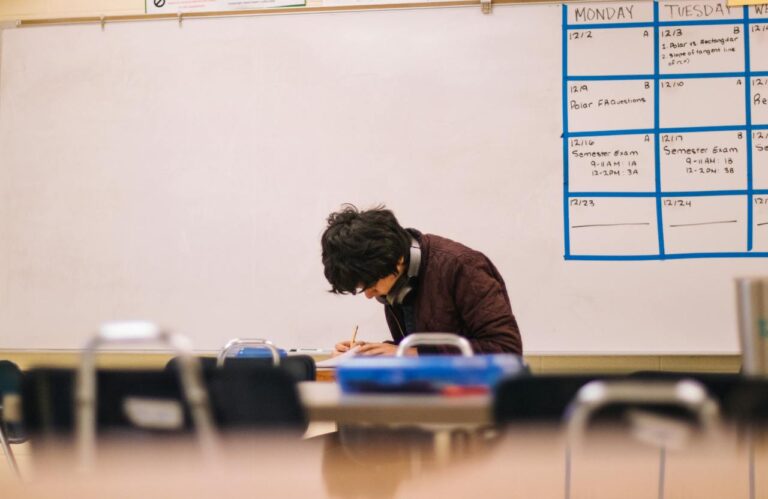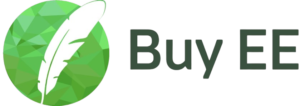Understanding EE and TOK with the Matrix
Hello, IB students! Are you seeking assistance with the EE and TOK matrix? You’re in the perfect place. As an expert in IB education, I have guided many students through the complexities of the International Baccalaureate Diploma Program, including the Extended Essay and the Theory of Knowledge. Understanding the EE and TOK matrix is vital for success in the IB Diploma program. Therefore, today, we will dig into this topic to clarify all aspects so you can move forward.
The Role of EE and TOK in the IB Diploma
The Extended Essay, in my opinion, is a rite of passage for IB students. It’s a 4,000-word research paper that gives students a taste of university-level research. Here, students can dig into a topic of their choice, cultivating their research skills and fostering independence and self-discipline. It’s a challenging yet rewarding process that, according to general IB criteria, significantly contributes to the holistic development of students.
On the other hand, Theory of Knowledge is a course unique to the IB, designed to encourage students to question the bases of knowledge and to understand the biases that influence judgment. From my experience, this course is instrumental in shaping critical thinkers and informed citizens. It challenges students to reflect on the nature of knowledge and how we claim to know what we know.
In the heart of these two components lies the EE and TOK matrix, a grading system that combines the scores of EE and TOK. Understanding it is vital for several reasons:
- Additional Points. It offers up to 3 additional points towards the total IB score, which can be crucial for university admissions.
- Interdisciplinary Learning. It encourages students to make connections between different areas of knowledge.
- Critical Thinking. EE and TOK develop critical thinking skills crucial for higher education and professional life.
- Research Skills. The EE, in particular, develops advanced research skills, preparing students for university-level writing and analysis.
- Reflective Learning. TOK teaches students to reflect on the learning process, fostering a deeper understanding of how knowledge is constructed and evaluated.
From my experience, integrating EE and TOK within the IB curriculum is not just about academics; it’s about preparing students for the challenges they will face in the real world. These components teach them to think independently, question conventional wisdom, and approach problems critically and analytically.
What Is the EE and TOK Matrix?
The Theory of Knowledge and Extended Essay matrix is a framework that connects two core elements of the IB curriculum. As I’ve realized through my extensive experience in IB education, this is not just a scoring mechanism but a strategic tool that underscores the interconnectedness of knowledge and critical thinking. Below is a breakdown of what this matrix entails.
Scoring System
The EE and TOK matrix operates on a scoring system that awards points based on the grades achieved in both the Theory of Knowledge and the Extended Essay. Each component is graded individually on an A (highest) to E (lowest) scale.
Additional Points
The intersection of these two grades in the matrix determines the additional points students can earn toward their overall IB Diploma score. The maximum extra points a student can earn from the matrix is 3. It can be crucial for students aiming for a high total score in the IB Diploma, which can impact university admissions and scholarship opportunities.
Encouraging Depth and Breadth
The matrix is designed to encourage students not only to excel in individual research and critical thinking but also to understand the interconnectedness of different areas of knowledge. The EE allows students to dig deeply into a subject of interest, developing research skills and subject-specific knowledge. Meanwhile, TOK challenges students to reflect on the nature of this knowledge and understand the broader implications of what they learn.
Holistic Education
This matrix underscores the IB’s emphasis on a holistic educational approach. It recognizes that academic success is not just about content knowledge but also about understanding the complexities of knowledge itself and applying critical thinking skills across various disciplines.

How to Calculate the EE and TOK Matrix?
Calculating the EE and TOK matrix in the International Baccalaureate Diploma Program involves understanding how the grades received in both the Extended Essay and Theory of Knowledge contribute to your total IB score.
TOK — A | TOK — B | TOK — C | TOK — D | TOK — D | |
EE — A | 3 | 3 | 2 | 2 | 1 |
EE — B | 3 | 2 | 1 | 1 | 0 |
EE — C | 2 | 1 | 1 | 0 | 0 |
EE — D | 2 | 1 | 0 | 0 | 0 |
EE — E | 1 | 0 | 0 | 0 | The diploma will not be awarded |
Here’s a step-by-step guide to calculating your points in the EE and TOK matrix:
- Understand the Grading Scale. The Extended Essay and Theory of Knowledge are graded on a scale from A (highest) to E (lowest). Your performance in each is assigned one of these grades.
- Refer to the Matrix Table. The IB provides a matrix table that cross-references the grades from EE and TOK. It shows how combinations of grades in these two areas translate into additional points for your IB Diploma.
- Locate Your Scores on the Matrix. First, find your EE grade on the vertical axis of the matrix table, and then find your TOK grade on the horizontal axis. Where these two grades intersect is the number of additional points you earn.
- Calculate Your Additional Points. These additional points are added to your overall IB score. The maximum number of points you can earn from the EE and TOK matrix is 3.
- Consider the Failing Condition. Be aware that receiving an “E” in either TOK or the EE is considered a failing condition for the IB Diploma, regardless of how many points you’ve scored in other subjects.
Here’s a simplified example: If you receive an “A” in TOK and a “B” in your Extended Essay, you would find “A” on the vertical axis (for EE) and “B” on the horizontal axis (for TOK) and see where these lines intersect on the matrix. The intersection point gives you the additional points you’ve earned.
Crush your IB goals with our extended essay writing service!
Leave the stress to our expert writers and enjoy some downtime. Excellence is just a click away.

Strategies for Success in EE and TOK
As an IB mentor, I’ve accumulated a wealth of strategies that pave the way to success in both the Extended Essay and Theory of Knowledge. Let me share these insights, which I believe can be instrumental in your academic path.
Topic Selection
In my opinion, the choice of topic is where your path to an excellent EE begins. Select a subject that piques your interest and aligns with your academic strengths. This alignment is crucial, as it will sustain your motivation throughout the research and writing process. Remember, a well-chosen topic is like a map; it guides every research step.
Research Thoroughly
As I know from experience, the depth and breadth of your research can make or break your essay. Use a variety of sources to gather diverse perspectives. Academic journals, books, and reputable online resources should be your pillars. It’s about being thorough and discerning in choosing quality over quantity, especially for interdisciplinary extended essay topics.
Outline and Structure
According to general IB criteria, a coherent structure is vital to writing a successful Extended Essay. I always advise my students to begin with a detailed outline. It should map out your introduction, where you pose your central research question, a body where arguments are meticulously developed, and a conclusion that doesn’t just recap but adds value to your essay.
You May Also Be Interested:
- What Is Extended Essay RPPF
- What Is the Extended Essay Rubric and Grading Criteria?
- How to Write IB Extended Essay Reflections?
- What Sets Extended Essays Apart from Regular Essays?
- How to Write IB Extended Essay
Feedback and Revision
From my experience, feedback is gold. Seek it early and often from your supervisor. Be open to constructive criticism and use it to refine your essay. Remember, revision is a process that can significantly improve the quality of your work.
Engage with the Material
Truly engaging with TOK means going beyond passively attending classes. Participate in discussions, challenge ideas, and, most importantly, apply TOK concepts to different areas of knowledge.
Critical Thinking
Critical thinking is the essence of TOK. I always encourage students to examine arguments from multiple angles, question assumptions, and develop their reasoned perspectives. It is not just about answering questions but also about asking the right ones.
The TOK Essay
When it comes to the TOK essay, it’s imperative to select a prescribed title that resonates with you. Then, structure your response by clearly outlining your thesis, supporting arguments, and real-life situations that illustrate your points.
The TOK Exhibition
The exhibition is your chance to bring TOK concepts to life. From my experience, the most successful works clearly connect a real-life situation to TOK ideas. It’s not just about the content; it’s about how you communicate it. Engage your audience with clear explanations and genuine enthusiasm for the subject matter.
The Bottom Line
In summary, the EE and TOK matrix plays an essential role in the IB Diploma, providing students an opportunity to gain extra points important for university admissions and scholarship applications. Although IB requirements can be demanding, our IB Extended Essay Writing Service is here to help. We provide specialized support to ease the burden of EE writing, enabling IB students to balance their academic pursuits with personal interests more effectively.

